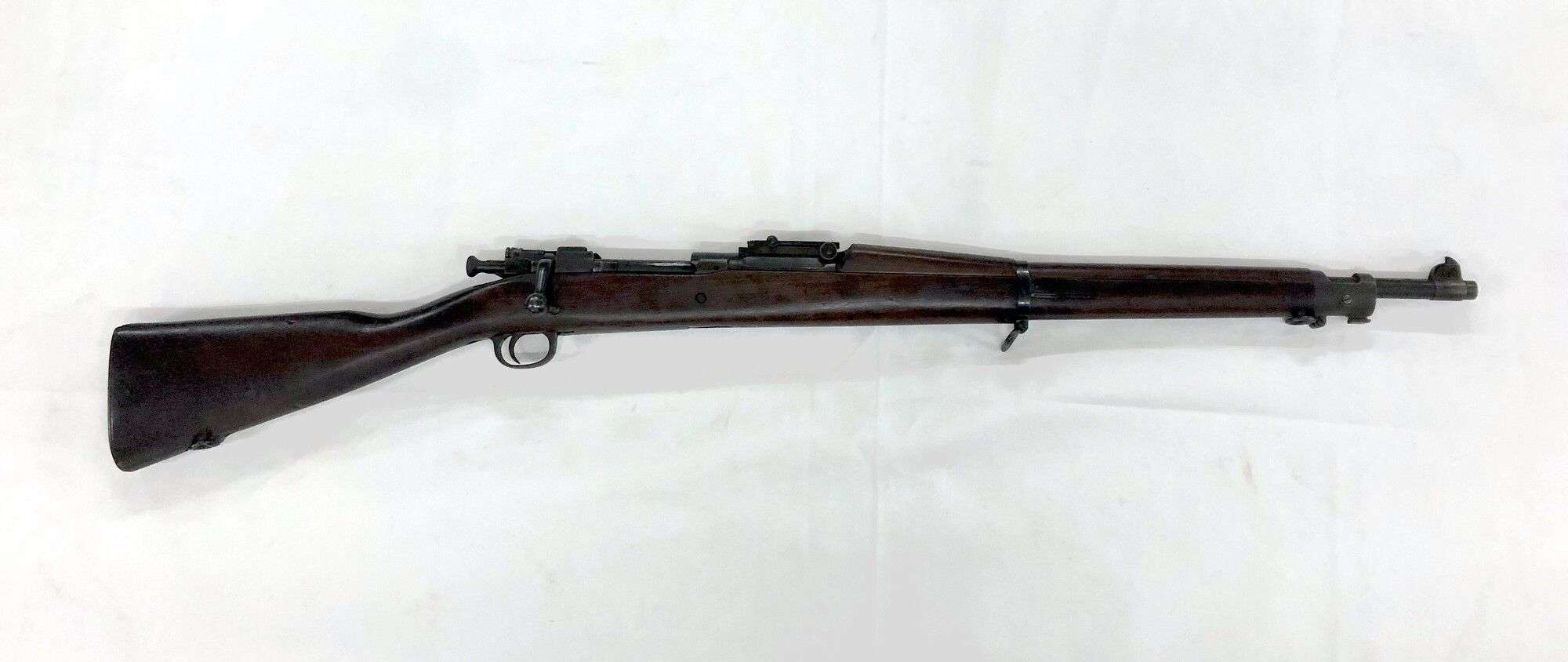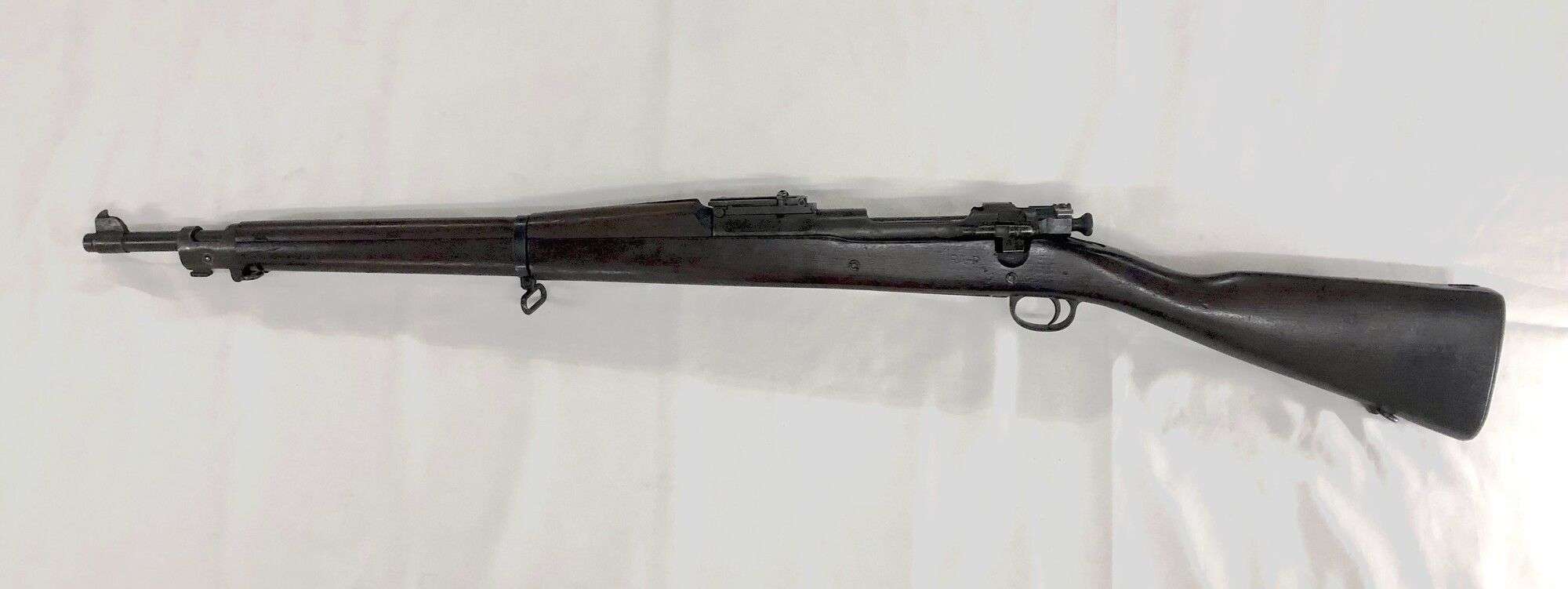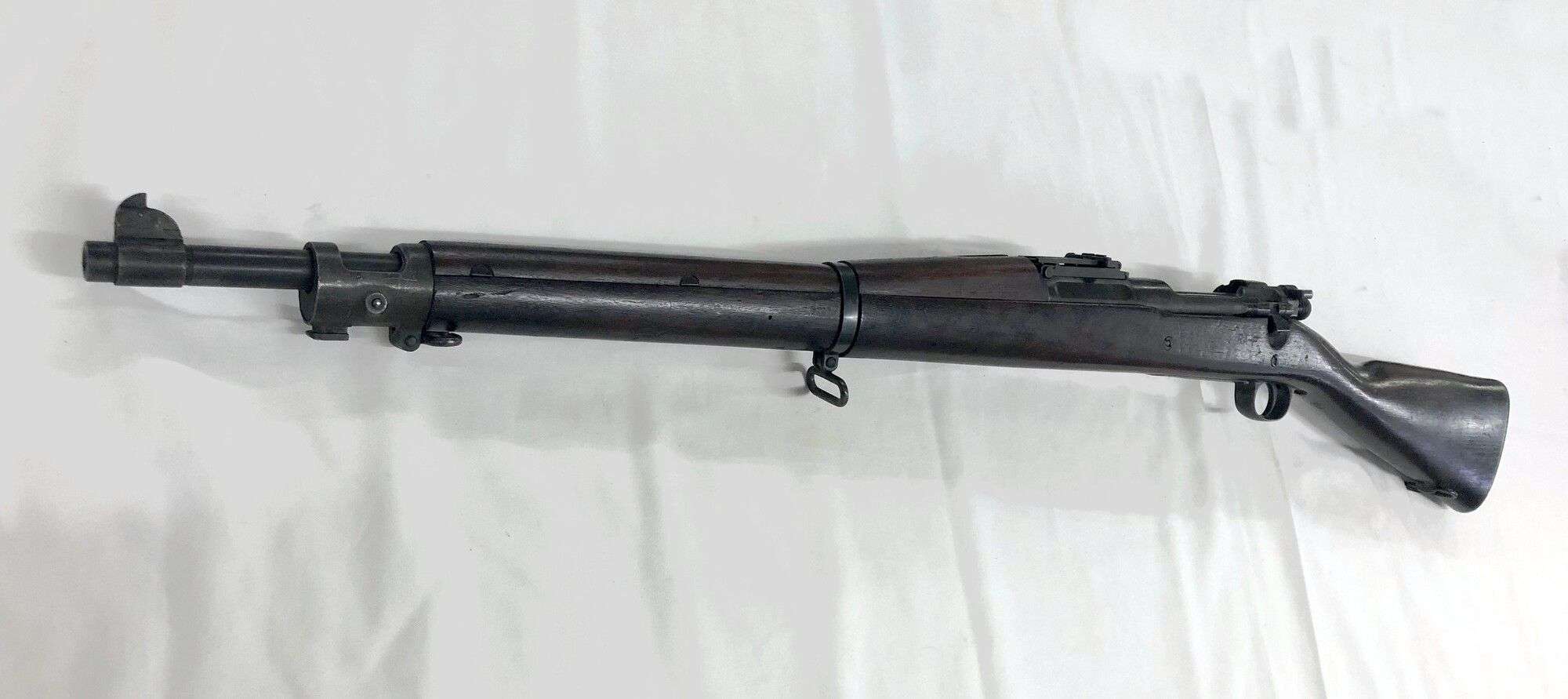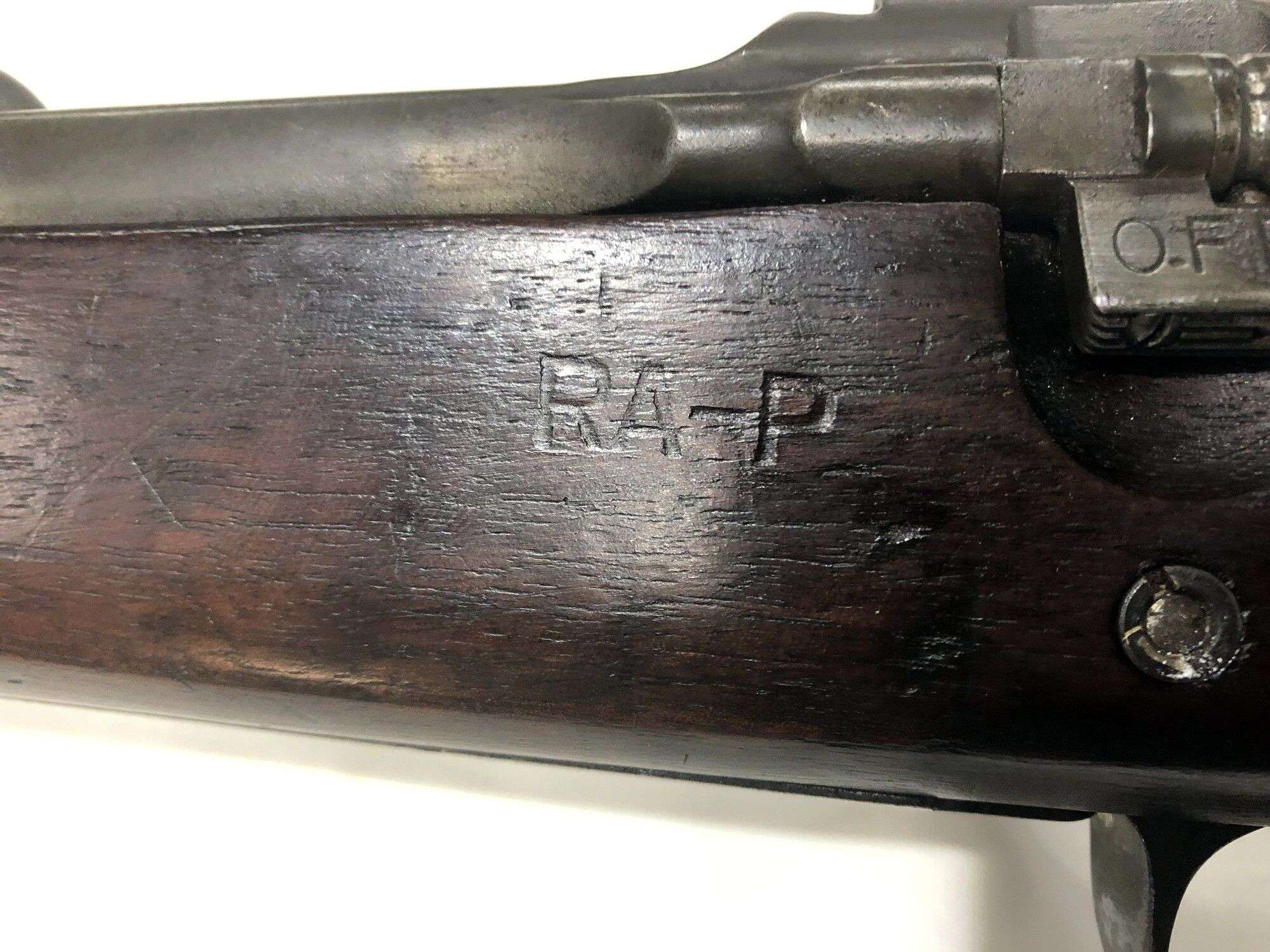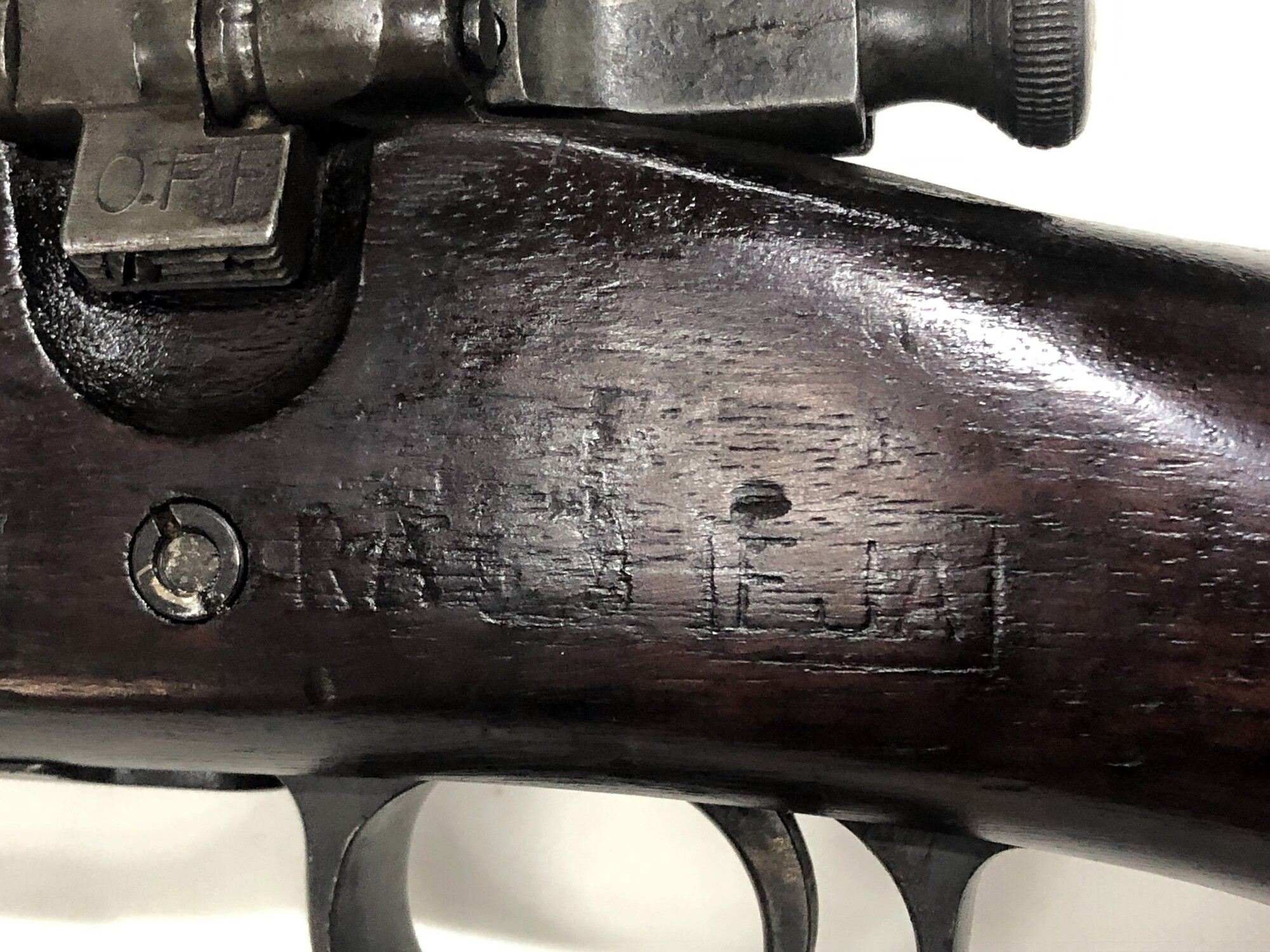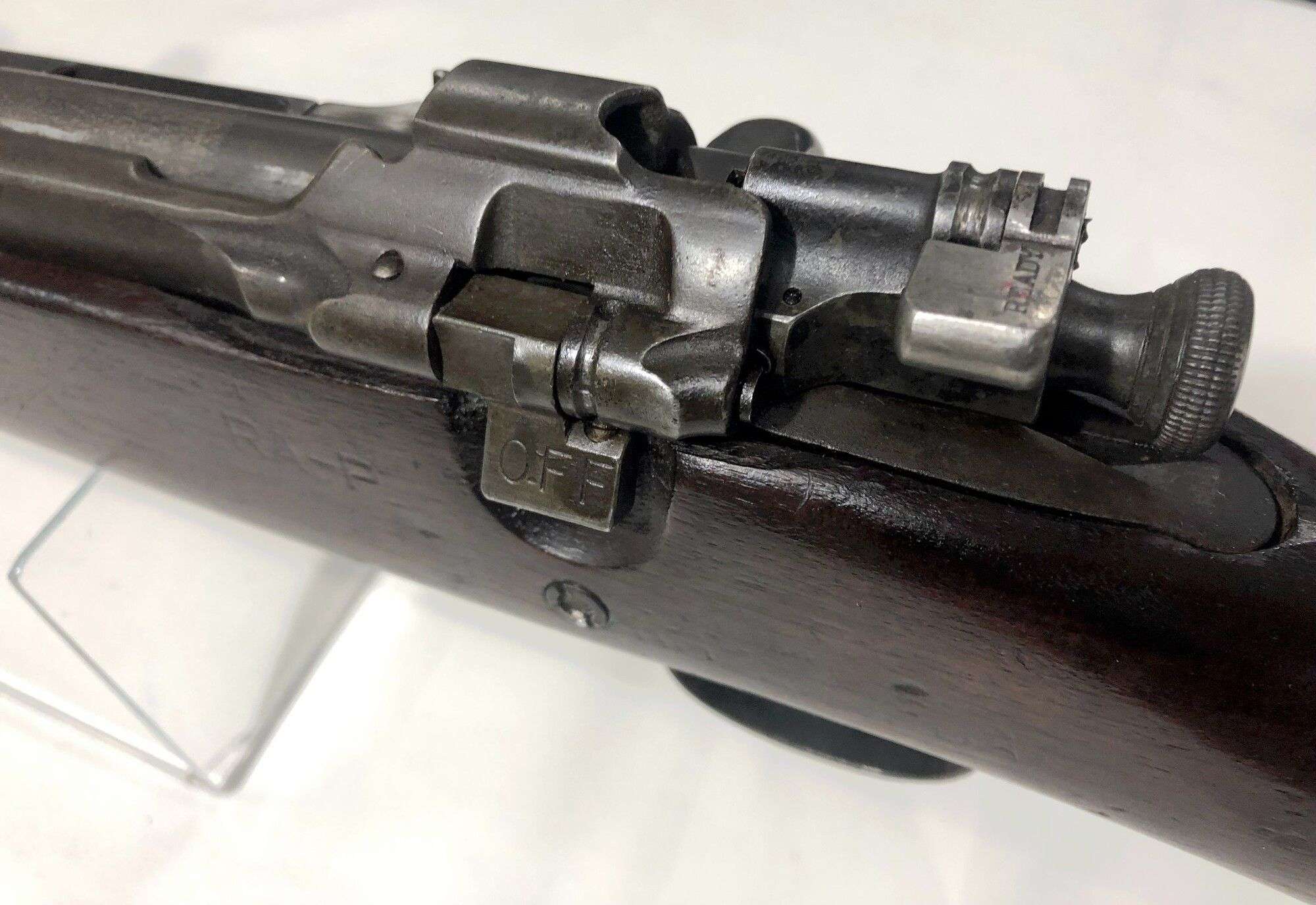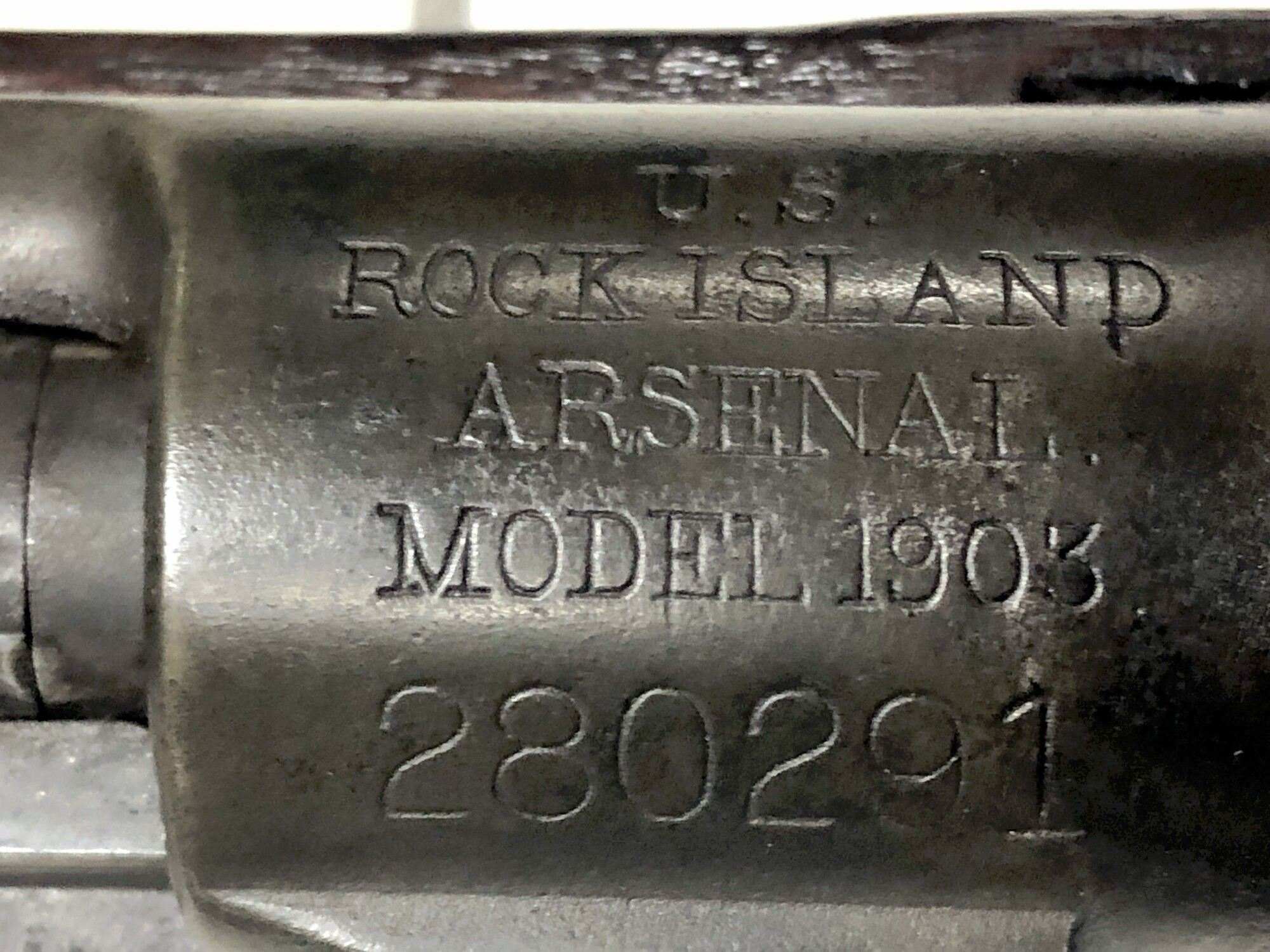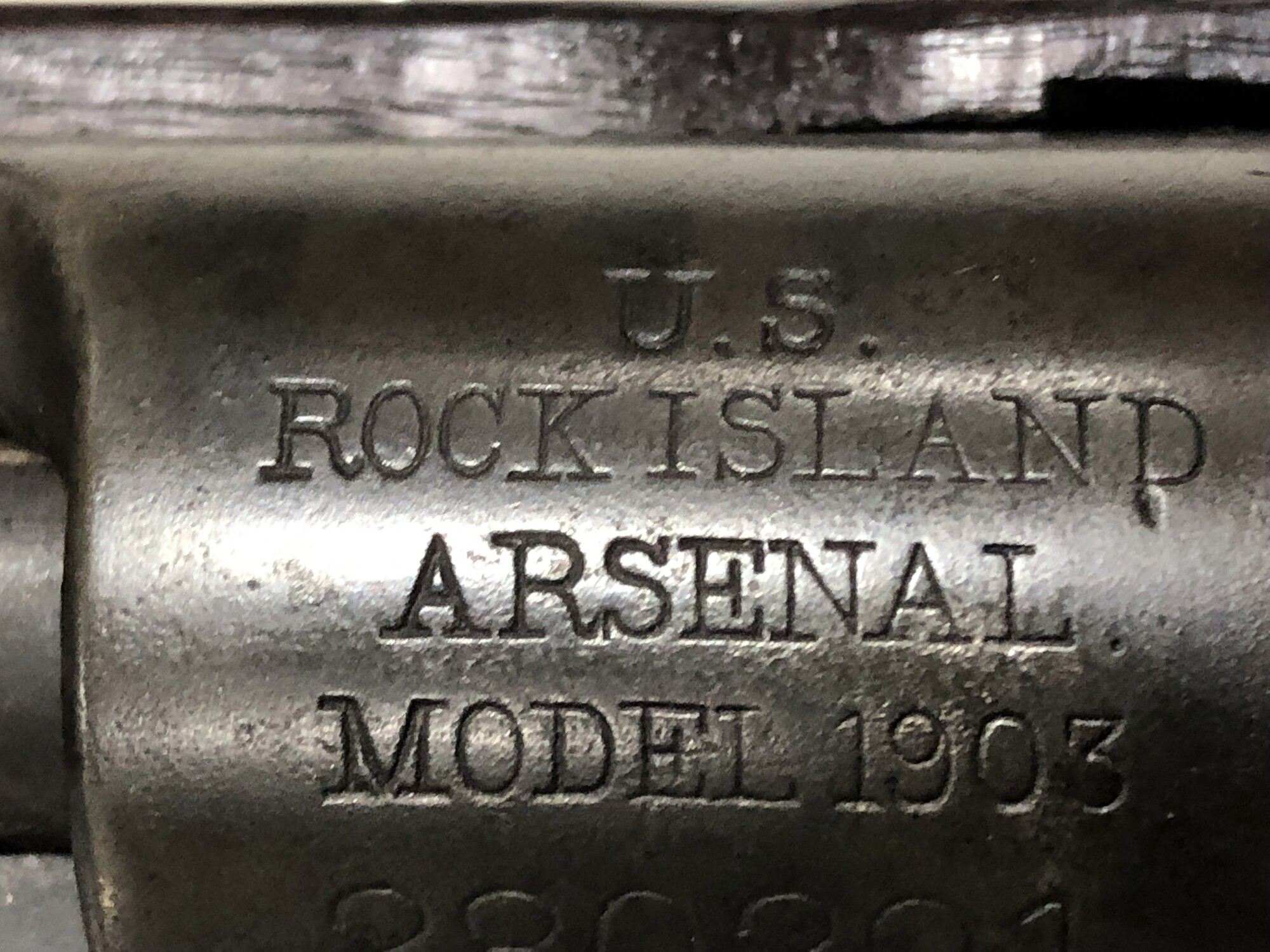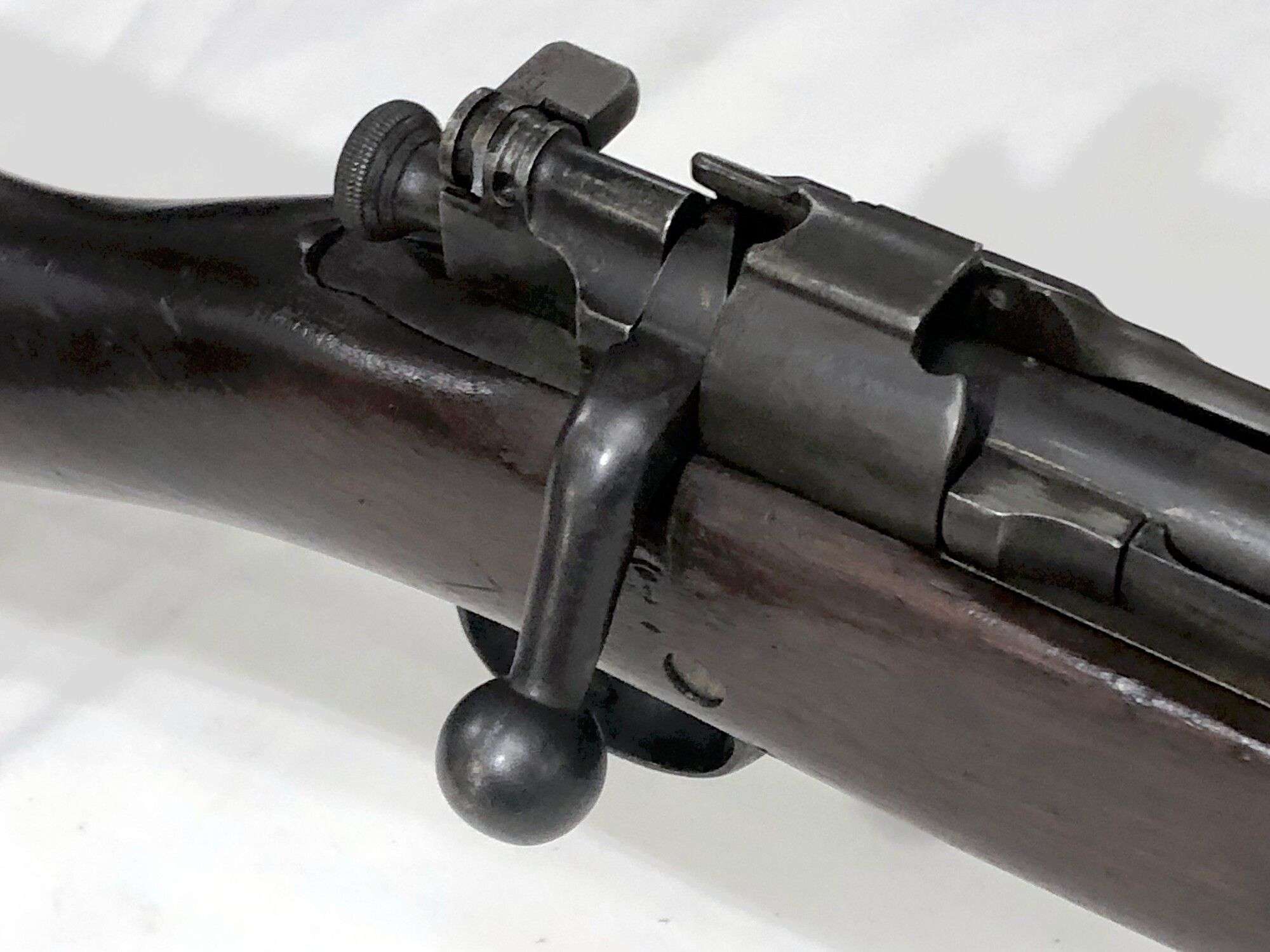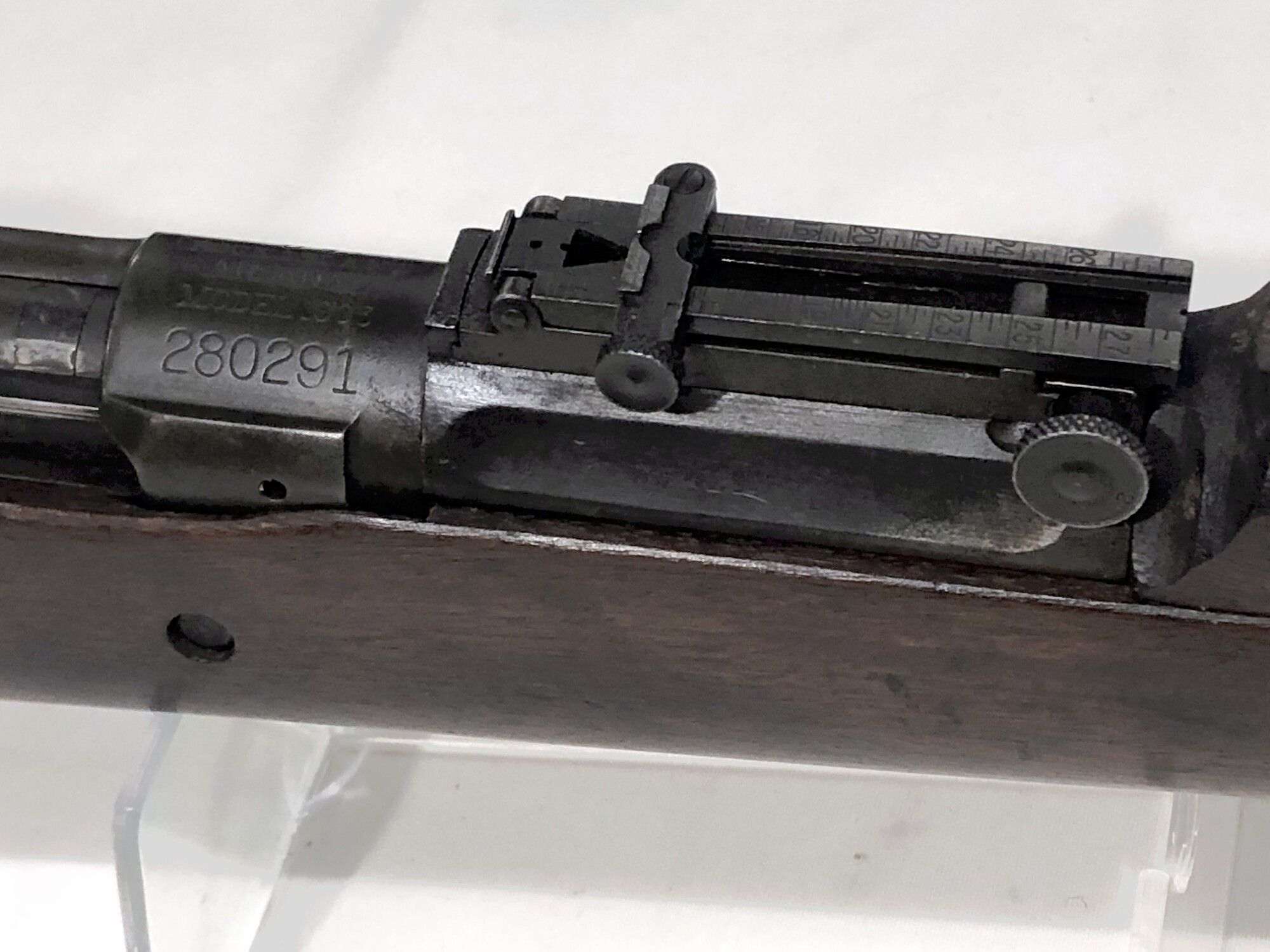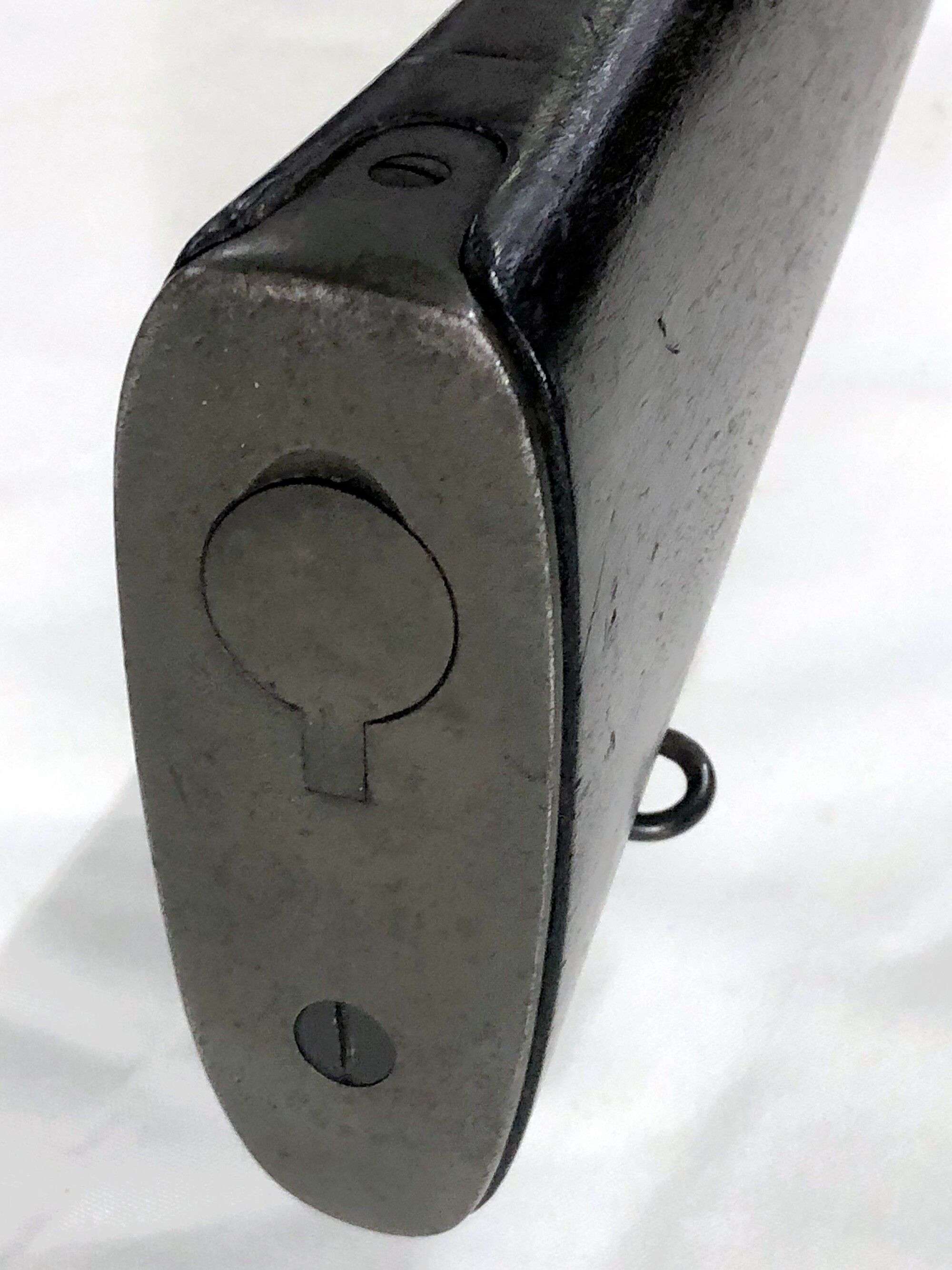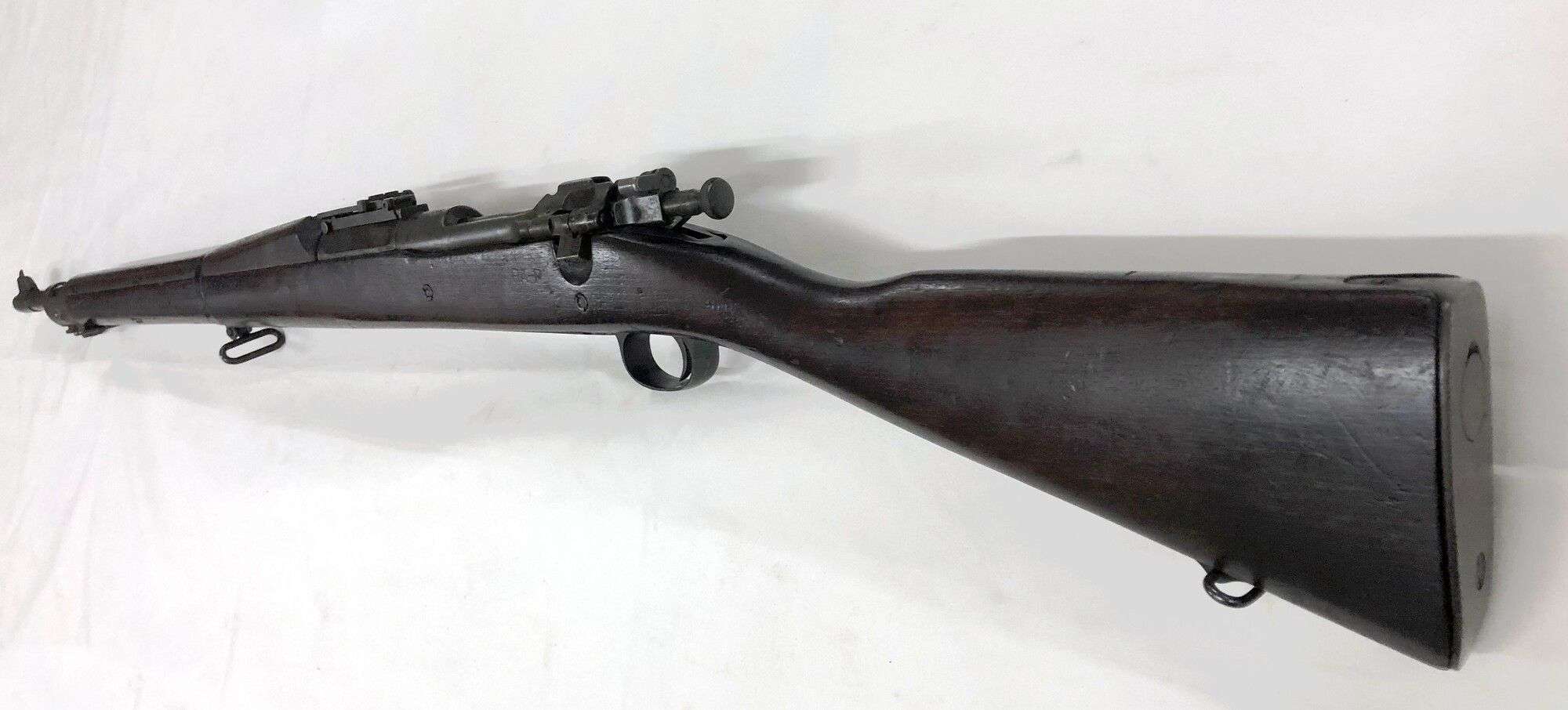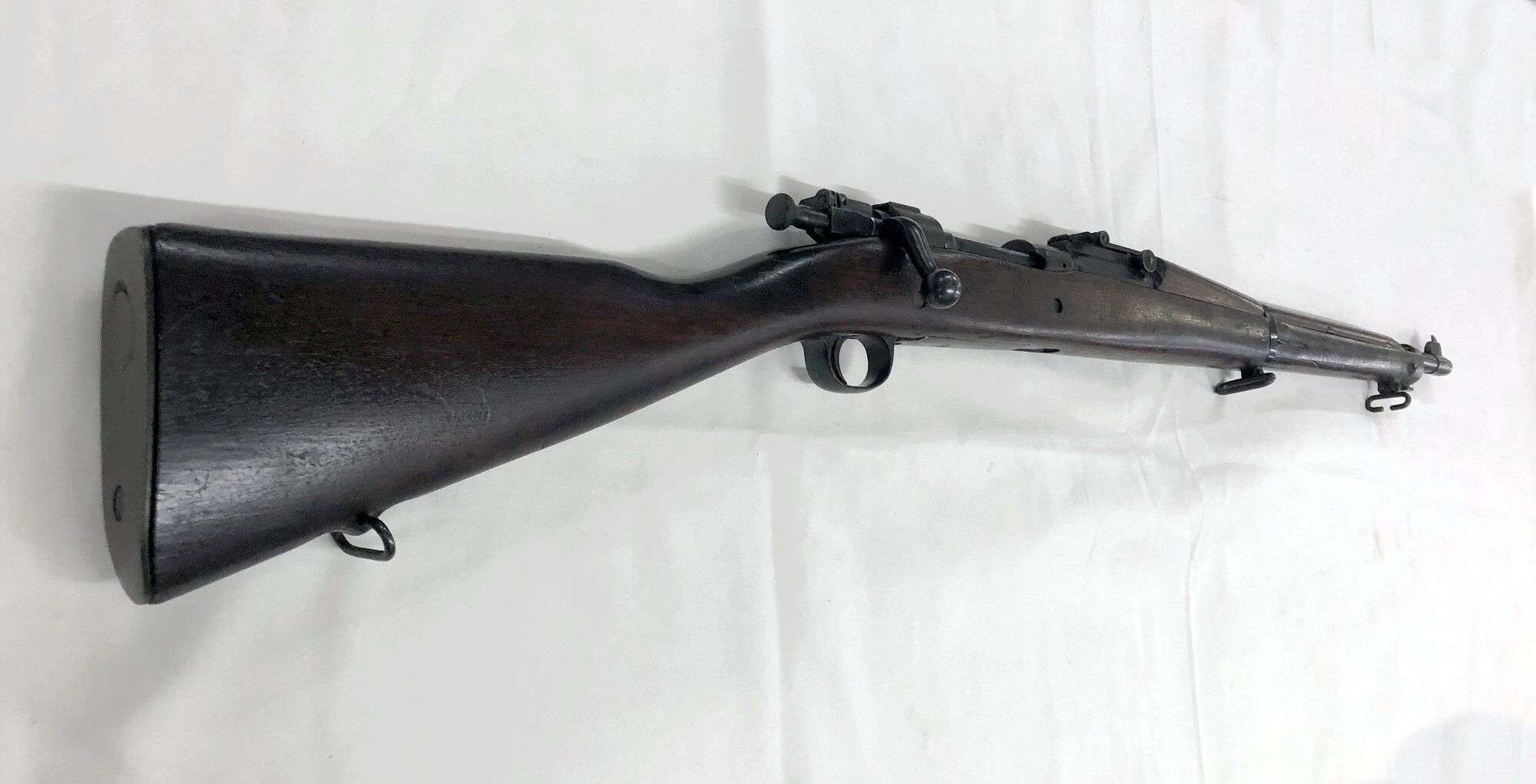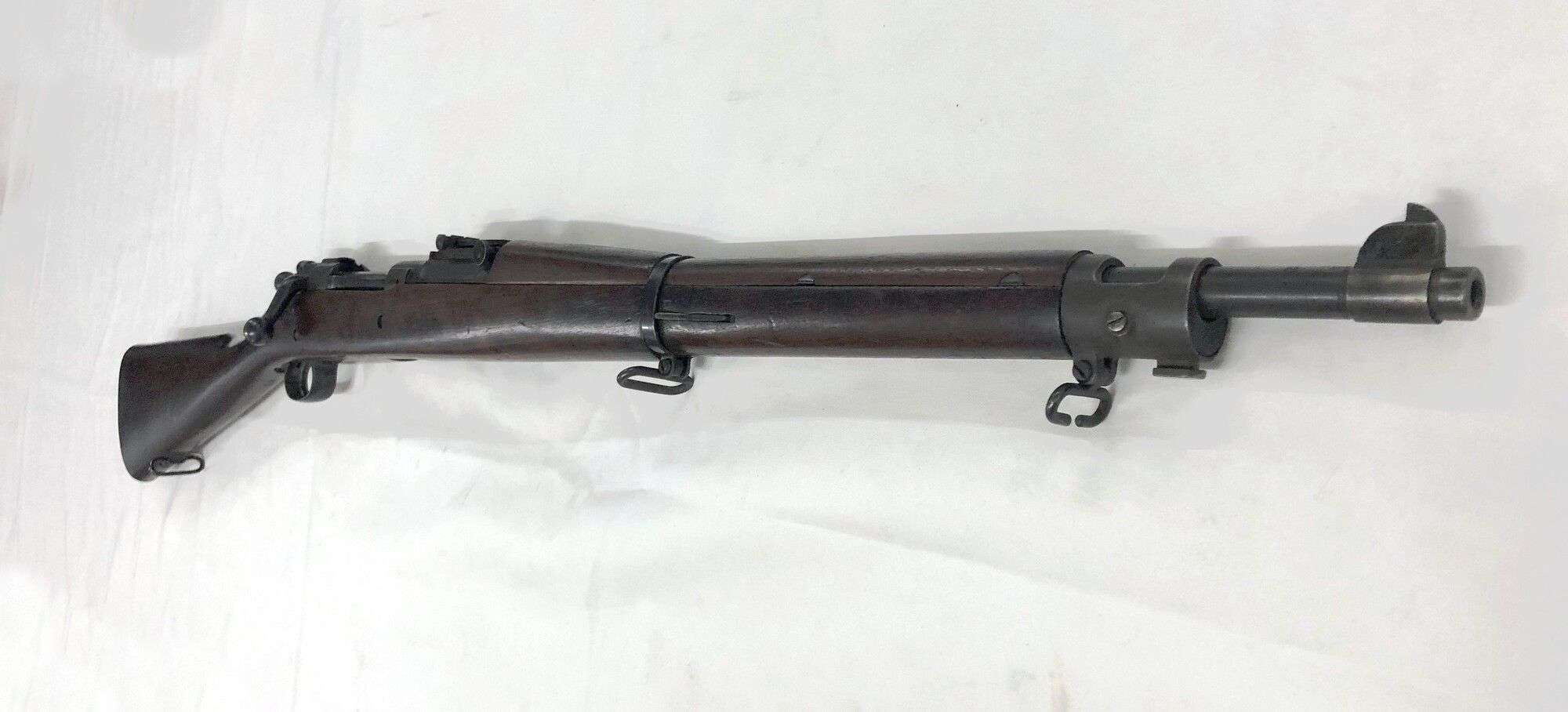Description
Adopted in 1903 as a replacement for the .30-40 Krag-Jorgensen bolt-action rifle which had shown several deficiencies during the Spanish-American War, the original Model 1903 rifle was chambered for the .30-’03 cartridge. Modifications were subsequently made in the design during 1905-1906 & included the incorporation of a folding-leaf rear sight as well as changing to the improved .30 Springfield (.30-’06 Sprg.) cartridge.
In addition to being manufactured at Springfield Armory, the Model 1903 (often called the ’03) was produced at Rock Island Arsenal from 1903 to 1913 (which is where & when this rifle was made) & again from 1917 to 1919.
This actual rifle was manufactured in 1907 according to records & only 68,411 were made in this year. As was usual with Model 1903’s, this rifle has a replacement barrel in 1942 when it was likely recalled to service which is marked with SA (Springfield Arsenal), the US ‘Flaming Bomb’ ordnance marking along with the date 2-42. See photos.
The M1903 Springfield, (formally the United States Rifle, Caliber .30-06, Model 1903), is an American five-round magazine fed, bolt-action service repeating rifle used primarily during the first half of the 20th century. It was officially adopted as a United States military bolt-action rifle on 19 June 1903 (hence Model 1903) & saw service in World War I.
By the time of U.S. entry into World War I, 843,239 of these rifles had been produced at Springfield Armory & Rock Island Arsenal.
By late 1913 appropriations for military expenditures were severely reduced, which resulted in Rock Island Arsenal ceasing manufacture of the ’03 & Springfield scaling back its production line. Since the small pre-war U.S. Army, Navy & Marine Corps were more or less fully equipped with Model 1903 rifles by this time, the reduced production rate was not seen as a problem. That would change just a few years later.
When America entered the Great War in April 1917 there weren’t nearly enough on hand to equip the rapidly mobilizing armed forces. In early 1917, Rock Island Arsenal was directed to resume manufacture which was easier said than done. The assembly line had been shut down for three years & most of the skilled workers had long since departed. Rock Island also experienced some problems in recruiting & training a new workforce. To exacerbate the difficulties there were troublesome shortages of raw materials, chiefly suitable steel, since many other arms manufacturers were also gearing up to make various types of firearms. Since Springfield Armory still had a cadre of experienced workmen the facility did not experience as many problems as Rock Island during this period, but there were still shortages of materials, which had some impact on the production rate. In order to speed manufacture some components were slightly modified to reduce machining time, including elimination of the serrations on the trigger and checkering on the butt plate. None of these changes had any negative effects on the utility of the rifles & there was no discernible reduction in the quality of either workmanship or materials of the Springfield & Rock Island ’03 rifles made in the 1917-1918 period from those made previously. In late 1918, the heat-treatment procedure for the receivers and barrels was changed from the old case-hardened variety to a stronger, double-heat-treated type. Another change made in late 1918 was the use of the more durable Parkerised finish to replace the attractive, but labor-intensive bluing that was previously used for many of the rifle’s metal components.
In relation to the history regarding heat treatment of early Springfield’s, there is some conjecture & differences of opinion on whether these rifles are safe to shoot. We have reviewed all of the relevant history & as many facts we can find so are comfortable that this is safe to shoot (it has been fired many times since concerns were raised 102 years ago). Find out the facts & make your own decision by visiting http://m1903.com/03rcvrfail/
Prior to World War I, the Springfield ’03 reigned supreme on many of the rifle ranges of the day. Amazingly, the ’03 in military configuration successfully competed against the best target rifles from other nations in the 1912 Olympics & other prestigious shooting matches.
It was officially replaced as the standard infantry rifle by the semi-automatic eight-round M1 Garand starting in 1936 although the M1903 Springfield remained in service as a standard issue infantry rifle in early WW2, since the U.S. entered the war without sufficient M1 rifles to arm all troops.
In 1942 the M1903 production was discontinued in favor of the M1903A3.
This rifle is all original & matching. Nice cartouches are easily visible on the wood including FJA in a square which was the stamp for Lt. Col. Frank J. Atwood, Chief Inspector at the time & P in a circle indicating it was proof tested. RA-P indicates it was inspected & perhaps refurbed at Remington Arms at some stage of its life.
These original Springfield Model 1903 rifles are highly desirable for collectors & hard to find. They are fetching between $1,500 & $4,000 USD in the US (when they become available).
This is your chance to own an original in outstanding condition with a great shootable bore already imported into Australia.
Please view all of the photos carefully as they form the main description & override all others.


